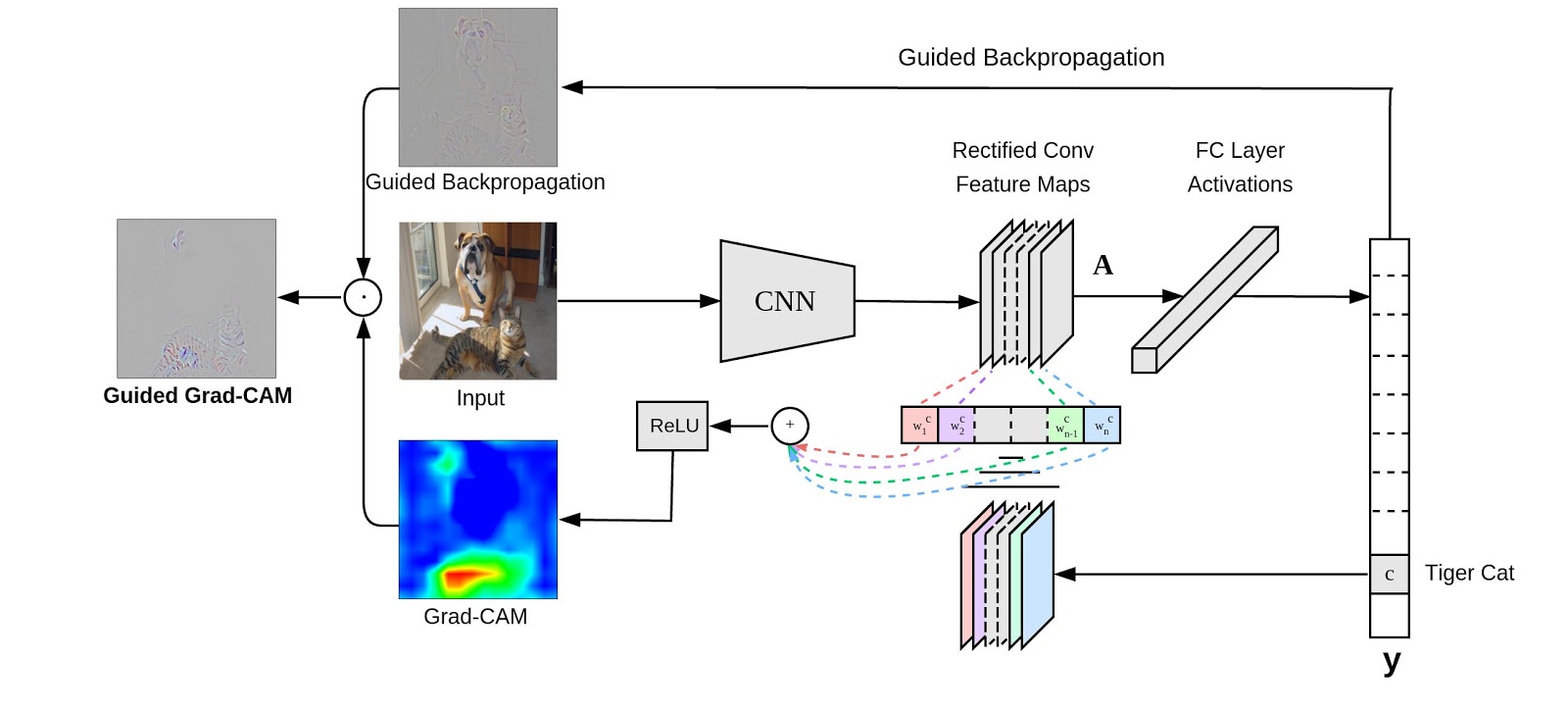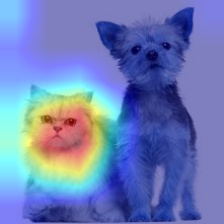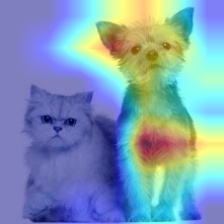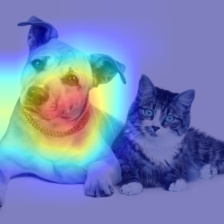This is the repository for Pytorch Implementation of "Grad-CAM: Visual Explanations from Deep Networks via Gradient-based Localization". If you have any issues regarding this repository, please contact meliketoy@gmail.com.
You can see the original paper here
See the installation instruction for a step-by-step installation guide. See the server instruction for server settup.
- Install cuda-8.0
- Install cudnn v5.1
- Download Pytorch for python-2.7 and clone the repository.
- Enjoy!
pip install http://download.pytorch.org/whl/cu80/torch-0.1.12.post2-cp27-none-linux_x86_64.whl
pip install torchvision
git clone https://github.com/meliketoy/gradcam.pytorch"Grad-CAM: Visual Explanations from Deep Networks via Gradient-based Localization".
In this repo, we will be training and testing the model with a very simple, cat vs dog dataset. You can view and download the dataset yourself by clicking the link above.
Implementation on your own private data only requires modifications in the directory within the configuration files inside each modules.
You can prepare your data with the preprocessing module. In the configuration file, set the directory to the directory containing the training data.
As we are fine-tuning the model, we will only be taking a small portion of the original training set.
$ cd ./1_preprocessor
$ python main
> Enter mode name : split # This will make a train-validation split in your 'split_dir' in config.py
> Enter mode name : check # This will print out the distribution of your split.
> Enter mode name : meanstd # This will print out the meanstd value of your train set.Copy the value of meanstd in the third line, and paste it in the configurations of each module 3 and module 4. View the README-preprocessor for further instructions.
Then, in the classifier module, run the line below
$ ./scripts/train/resnetThis will fine-tune a pre-trained resnet-50 model on your dataset. To train your network on different models & layers, view the scripts. See README-classifier for further instructions.
After you have trained your model, there will be a model saved in the checkpoint directory. The files in directory will be automatically updated in the detector module, searched by the directory name of your training set.
In the configuration of module 4, match the 'name' variable identical to the 'name' you used in your classification training data directory name.
The heatmap generation for each of the test data can be done by running,
$ ./scripts/detect.shThis will generate a heatmap which will look like
See README-detector for further instructions.
This strategy could be used as a method to perform semi-supervised detection, a detection learning when only given the classification label and not any local annotations.
Implementation on luekocyte detection(which I submitted a paper on) will look like,

If you want to change the model configuration, see the script or the configuration file






